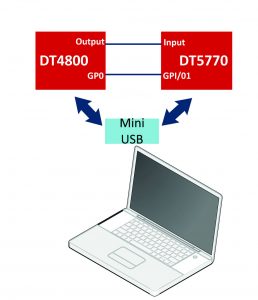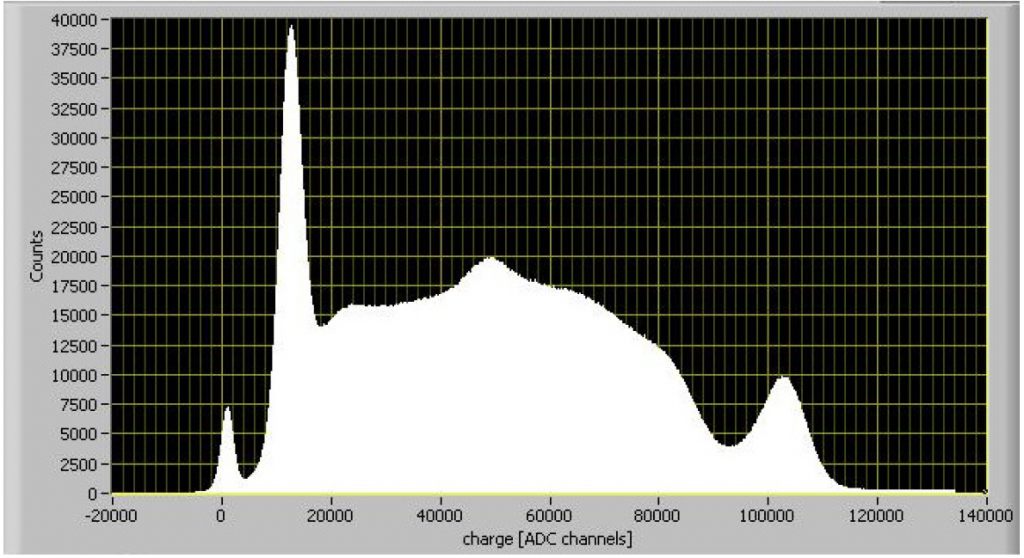| Difficult | Execution Time | Data Analysis | Radioactive Sources |
|---|---|---|---|
| Yes | No |
Equipment:
Purpose of the experiment
Analysis of the spectrum of the deposited energy by a γ ray in a detector discloses the essence of the interaction of high energy photons with matter and allows to learn by doing the detector related effects.
Fundamentals
For γ-energy less than 2MeV, the interaction with matter is dominated by Compton scattering and Photo-absorption. The analysis of the Compton continuum of the deposited energy and of the photo-peak conveys information on the characteristics of the decaying isotope as well as the effects due to the system noise, the detected photon statistics, the stochastic terms in the detector and the intrinsic resolution of the scintillator. The experiment presumes to use 137Cs with its decays detected by a CsI crystal coupled to a Silicon Photomultiplier. The 137Cs source is particularly interesting due to its low energy X ray line at 32 keV and the high energy gamma emission at 662 keV. The former is relevant to optimize the lower detection limit of the system; the latter is a standard to evaluate the energy resolution. The use of the 2 lines and the analysis of the Compton spectrum characteristics allow to perform a rough measurement of the linearity with a single isotope.
Carrying out the experiment
To perform the experiment connect the DT4800 output to input of the MCA DT5770 and use the DT4800 GP0 as digitizer “trigger IN”. The DT4800 Control Software Interface allows to emulate signals from a real energy spectrum linked to a radioactive source with variable activity.

Block diagram of the experimental setup that makes use of the “Emulation Kit”
Results
The figure shows a typical gamma spectrum, recorded with a very low energy threshold. The left over from the system noise is clearly visible, as well as the low energy line at 32 keV and the photopeak. For this specific spectrum, the energy resolution on the 662 keV peak corresponds to:
Energy Resolution = ( FWHMpeak ⁄ μpeak ) * 100 ~ 10
FWHMpeak = full width at half maximum of the peak
μpeak = channel number of the peak centroid

137 Cs spectrum


